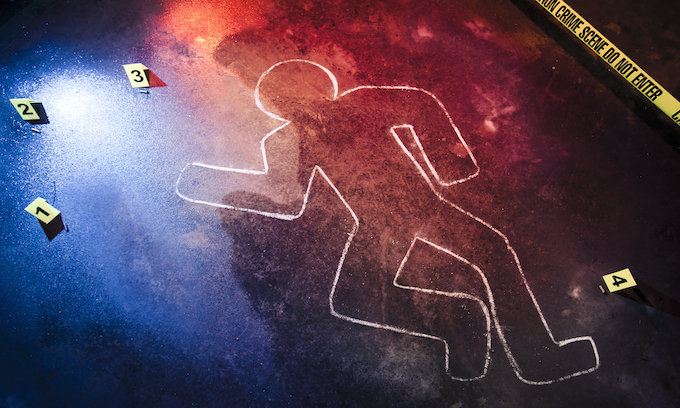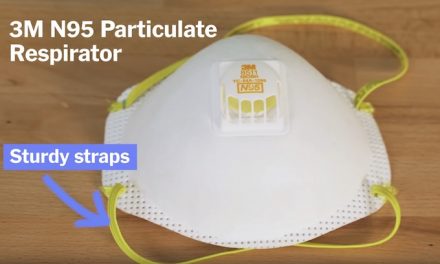Damala Badon bolted past dozens of police officers gathered in the hotel hallway and stopped in front of an open door to a third-floor room.
Her son had been celebrating a cousin’s birthday that Saturday night in late November. Badon had gotten a call about a shooting at the party and raced to the Embassy Suites by Hilton near Portland International Airport.
Several people wearing masks had burst into the room and appeared to target her son, according to family and police. Parnell “PJ” Badon Jr. was shot multiple times.
When his mother looked into the room, “All I could see was his legs,” she said.
“I wanted to believe that wasn’t him,” she said.
Her 18-year-old son was one of 101 people killed in Portland in 2022, making it the deadliest year in the city’s history.
It surpassed the record of 92 homicides set only the year before. Both 2022 and 2021 far exceeded the previous peak of 70 people who died in homicides in Portland in 1987.
The unceasing toll has left a trail of grief, devastating families and frustrating police and city leaders. Their effort to stem the violence hasn’t slowed it, though Mayor Ted Wheeler and the city’s new public safety director said they have plans to do more this year.
Who died in Portland homicides in 2022
Extra money the city provided last summer for grassroots groups to help interrupt the shootings was short-lived. A special police Focused Intervention Team quickly became overwhelmed, including having seven of its officers placed on standard leave at different times after they were involved in one fatal and two nonfatal shootings.
“At some point, we have to be tired of burying our children, having our children’s names turned into hashtags,” Damala Badon told The Oregonian/OregonLive.
“Nobody gets completely tired of it until it happens to their family. As a city, we just sit back and continue to watch this happen,” she said. “We’ve let it continue to happen and it’s gotten worse. We’re reacting, instead of preventing.”
PJ Badon was among seven victims younger than 20 last year. Six of the seven were Black teens and six of the seven died from gunshot wounds.
The youngest victim was 17-year-old La’Marcus Brazile, a junior at David Douglas High School.
In 2021, 10 people under 20 were killed in Portland and six of them died in shootings.
Nationally, gun-related injuries became the leading cause of death for young people from ages 1 to 19 in 2020, fueled by an increase in gun homicides, according to the Centers for Disease Control and Prevention.
While murder counts began to taper off last year in almost two-thirds of the country’s major cities that had recorded increases since 2019, Portland bucked that trend.
Both retaliatory gang shootings and shootings involving people living on the street drove up the killings here, police said.
“As a community we have to acknowledge that we have a gang, a houseless and a gun violence problem that is contributing to the violent crime level in this city,” said Sgt. Michele Hughes, one of the supervisors of the Police Bureau’s Homicide Unit.
Other killings stemmed from slights on social media, drug disputes, robberies, domestic violence and random violence, according to investigators. The oldest victim was 82-year-old Donald Pierce, beaten while waiting at a downtown bus stop in an unprovoked attack, police said.
More than half of Portland’s homicide victims in 2022 were people of color, mostly Black men – the same breakdown as the year before. That’s far disproportionate to the 6% of Multnomah County’s population that identifies as Black and 3% who identify as Black men.
Also as in 2021, dozens of spent bullet casings of multiple calibers were left behind at many of the crime scenes, suggesting the involvement of multiple shooters, police said.
At least 15 people killed were experiencing homelessness, according to an analysis by The Oregonian/OregonLive. The Police Bureau, tracking homelessness-related homicides for the first time, estimated that roughly a third of 2022 s killings involved homeless people — both as victims and perpetrators — but police wouldn’t identify the specific cases because of ongoing investigations.
Many of those killings involved guns, Hughes said. It’s a departure from the past when knives and beatings often resolved disputes between those living on the street and guns were treated as a commodity to trade for drugs or other things, she said.
It’s hard to know why Portland’s homicide count has continued to increase while it has dropped in other cities — and if or when the pace of the killings will slow, said city officials, police and criminal justice experts.
Even in the cities where homicides are falling, the numbers are still significantly higher than before the pandemic, according to Jeff Asher, a crime analyst based in New Orleans and co-founder of AH Datalytics, a data consulting firm.
“It’s something that’s not fully understood just yet,” Asher said. “It’s usually a complex set of factors that affects various cities.”
Those include easy access to guns, community distrust of police in the wake of George Floyd’s murder by a Minneapolis police officer and social isolation and school closures during the pandemic, Asher and other analysts said.
“We tend to think of murder and gun violence as a hyperlocal thing, but a lot of the time it’s related to national factors that are much more difficult to understand,” Asher said.
‘DRINKING FROM FIREHOSE’
Police Officer Zach Flippo said he’ll never forget Damala Badon’s screams when he responded to what initially came over the radio as an active shooter at Embassy Suites on Nov. 19.
It was the second shooting Flippo and his partner had gone to that night; an earlier one in North Portland left an 18-year-old Portland woman paralyzed, shot while sitting in the passenger seat of her boyfriend’s car.
“It’s way harder than I thought it was going to be,” said Flippo, a year into his assignment with the Focused Intervention Team.
“I feel like we’re drinking from a firehose,” he said.
Police recorded 1,308 shootings throughout the city last year, slightly below the 1,319 shootings in 2021. That’s still more than three times the 413 shootings reported in 2019. Slightly more people – 394 — were injured last year, compared to 391 in 2021.
Bullets have shattered the glass entrance door to Legacy Emanuel Medical Center’s emergency department, wounded a total of four students outside Jefferson and Cleveland high schools and injured a man walking along the Eastbank Esplanade. (Another shooting occurred in the parking lot of Portland’s Franklin High School Saturday night during a basketball tournament, injuring a 14-year-old boy.)
More than three-fourths of the people killed in 2022 homicides died in shootings.
The fatal shootings included five people killed by immediate family members who then killed themselves in four separate murder-suicides. One of the cases involved three men – a 30-year-old man shot and killed his father and his older brother and then himself.
Another five people died in separate strings of shootings by two men, according to police.
Joseph Kelly Banks, 50, was living in a Northeast Portland group home for adults with mental illness at the time police say he shot three men in what investigators suspect were random attacks that occurred over the first three months of the year. He remains at the Oregon State Hospital after a judge found he couldn’t assist in his own defense.
Nathaniel Freeman, a 34-year-old felon barred from having guns, faces charges in two fatal shootings 10 days apart.
Another high-profile killing last year was the close-range shooting of a 60-year-old woman, June Knightly, and wounding of four others gathered for a march in February outside Normandale Park.
A handful of killings occurred in broad daylight, on busy streets, in or along the edge of parks and in drive-by shootings in front of horrified witnesses.
Martre Oliver, 26, is accused of pumping three shots from a .40-caliber handgun into his twin brother Martese outside a Howard Johnson’s in late September and watching him crawl away for help before driving off. Martese Oliver bled out and died in the front lobby of the hotel on Northeast Sandy Boulevard and 82nd Avenue, police said.
The brothers had just driven to Portland from Renton, Washington, with two women and had rented two hotel rooms for alleged sex trafficking, police said in court. It’s not clear what prompted the shooting.
In October, 28-year-old Gage Lewis Vitchell was shot and killed during a tussle while waiting for a MAX train at Northeast Portland’s Holladay Park to get to his job at Buffalo Wild Wings. Vitchell’s alleged shooter, Andre Poston, believed Vitchell had broken into his car months earlier and approached him, calling him a thief, according to court testimony and video evidence. When Vitchell pushed him away, Poston pulled out a 9mm pistol and fired one shot, police said.
According to police, 11 of the homicides were ruled self-defense – nearly double the amount of the year before.
Portland police shot and killed four men in separate confrontations and a Clackamas County sheriff’s deputy shot and killed a fifth man after a chase into Portland. Grand juries found four of the shootings to be justified. One has yet to be reviewed by a grand jury.
Portland police also were involved in five nonfatal shootings, wounding three people. In one, no one was hit. In another, police shot at a driver after he rammed his truck into a police car. The driver sped away, and police said they didn’t know if the officer who fired wounded anyone.
Three of the police shootings — one fatal, one nonfatal and one where shots were fired but didn’t wound anyone — involved members of the Focused Intervention Team. The suspects were either armed with guns or shot at team members, police reported.
PLAYING CATCH-UP
Officer Flippo and partner Officer Dominic Lovato on the Focused Intervention Team said they’re just now starting to learn some of the most active shooters in the city.
“For a year, no one had a finger on the pulse,” Lovato said on a December night patrolling the city. “We’re trying to play catch-up.”
The city put the new team of 12 officers and two sergeants on the street at the start of 2022 to address shootings and arrest people involved in nonfatal shootings.
The team formed more than a year after the City Council dismantled the Police Bureau’s Gun Violence Reduction Team without an immediate alternative amid criticism that it had perpetuated gang labels and targeted a disproportionate number of Black people in traffic stops.
Veteran detectives also have retired in droves in the past two years, leaving the new team largely to learn on its own as the pace of shootings has intensified and spread across the city.
The gaps have left Flippo, Lovato and other Focused Intervention Team members with the uphill task of rebuilding previous community partnerships that evaporated with the demise of an earlier police gun team, they said.
Police also cite a directive from the police chief and mayor not to make traffic stops for low-level infractions and state case law that puts greater restrictions on when police can search a stopped car.
As a result, more people are freely carrying guns on them or in their cars, unafraid police will stop or search them, officers said.
The team’s officers have expressed frustration that when they work to build cases and remove guns from convicted felons, the people arrested often aren’t held in jail pending trial after their initial court appearances.
The city has sold the FIT team as “somewhat of a savior to get this gun problem under control, but they’re working in a totally different legal environment than we were working,” said Sgt. Mark Friedman, who worked on the Gun Violence Reduction Team, the Enhanced Community Safety Team and now is in the Criminal Intelligence Unit.
The Police Bureau “lost an incredible amount of experience, knowledge and community contacts to combat gun violence,” making it very difficult to figure out who is committing the crimes, said Hughes, the Homicide Unit supervisor.
Last April, Police Chief Chuck Lovell pulled detectives from the Cold Case Unit to bolster the day-to-day Homicide Unit. Twenty-four investigators have high caseloads, with each one serving as the primary or lead detective for seven to eight homicides.
In September four people died in homicides within 20 hours.
“The impact that has is tremendous,” Hughes said. “The teams have worked on little to no sleep on multiple occasions.”
Excluding the fatal shootings by police but including the murder-suicides, police so far have made arrests or identified suspects in 55% of the killings. That’s slightly above the national clearance rate, which was 54% in 2020, according to the latest FBI figures.
‘IT’S UNACCEPTABLE’
Large maps sit on a table of a conference room on the main floor of City Hall with clusters of circles depicting neighborhoods most affected by shootings since January 2019.
The city is trying to tackle the hot spots, one or two at a time, said Mike Myers, the director of the city’s Community Safety Division. The mayor tasked Myers in June to serve as “incident commander” to drive down Portland’s gun violence.
Old Town and Powellhurst-Gilbert recorded nine homicides each– the most among Portland’s 90-plus neighborhoods last year.
In late September, police and city officials brought back a dedicated team of officers to focus on Old Town’s Entertainment District after business and neighborhood leaders decried the violence there. The city had scrapped the weekend district patrol during the pandemic.
The city also arranged to provide extra lighting for a block-wide parking lot at Northwest Fifth Avenue and Davis Street, near where several homicides occurred.
Separately, the mayor’s office last summer called for a 30-day focused patrol in the blighted block of the Madison Suites motel at Northeast 82nd Avenue and Milton Street, beset by violence, drugs and homeless camps. The attention came after The Oregonian/OregonLive featured the block in a story and highlighted the concerns of neighbors who had complained for years about the problems.
Myers said he believes the city’s shootings will start to level off this year, noting the pace of homicides appeared to slow in December.
“It’s unacceptable,’ he said. “But we have stuff going on; we just need to keep building on it.”
The next two hot spots the city plans to address are the Powellhurst-Gilbert and Hazelwood neighborhoods, he said.
“Frankly, people don’t feel quite safe anymore,” said Arlene Kimura, chair of the Hazelwood Neighborhood Association who has lived in Hazelwood for 30 years.
She suspects most of the shootings result from people driving through the area due to its easy access from Interstate 205 and major thoroughfares including 122nd Avenue and Burnside Street.
“There needs to be serious consequences for the people who are doing the shootings or supplying the guns,” she said.
MORE INTERVENTION
Wheeler is considering adopting a “focused deterrence” public safety model this year — a step recommended by police and members of the oversight group monitoring work by the Focused Intervention Team. They visited Tampa and Oakland to learn about how those cities target gun violence.
Stephanie Howard, community safety director in the mayor’s office, said details are still being worked out, but a decision should be made by mid-January. Any move to adopt such a strategy will include more community input, she said.
The strategy discourages gang members from engaging in violence and was developed in Boston in the late 1990s and used in Portland in that era, too.
Through meetings dubbed “call-ins,” police, prosecutors, probation officers, service providers and leaders from the most affected communities address people suspected of participating in shootings or illegally carrying guns.
They deliver three messages: The affected communities want the violence to stop and want those at risk of getting shot to stay safe and not hurt others. They can get immediate support, including protection, food and shelter. If the violence continues, authorities will work collectively to prosecute people not only for any shootings but will investigate other alleged crimes, such as drug dealing, identity theft or sex trafficking.
“If the city doesn’t systematically understand and engage with the small world of groups and group dynamics that drive homicide and gun violence, it will not be effective,” said David Kennedy, a professor at the John Jay College of Criminal Justice in New York who worked with Portland police in the late 1990s.
In a similar vein, Officer Jason Hubert, who leads the Police Bureau’s Crisis Response Team, returned from a trip to Oakland and said he used that city’s “custom notifications” approach after a particularly violent shootout in Woodlawn Park in early November that scattered 109 bullet casings from four different calibers. It came three days after a 19-year-old man was fatally shot in the head in a car on the edge of the Northeast Portland park.
Hubert supervises five officers and about 20 volunteers who provide support to victims and families at crime scenes.
Hubert called more than 10 parents and guardians of people suspected by police of being involved in what appeared to be a two-week spate of retaliatory shootings.
Hubert said he left messages, saying: “We know your son is or has been around recent gun violence. If they need resources, please call me back.”
He said he wanted to put people on notice that police were watching them and give them the opportunity to seek services or support. He said he heard back from five parents, thanking him and saying they would relay his message.
“It calmed things down for a couple of weeks,” he said.
In Oakland, Hubert said, high-ranking police commanders and investigators meet weekly about shootings in their districts, share information and then target problem areas with more officers and probation and parole officers, as well as community-based services for shooters and their families.
In Portland, police meet with state and federal prosecutors in weekly shooting reviews, but the meetings have largely focused on furthering investigations into shootings and haven’t led to coordinated, full-scale responses from officers, county probation and community groups, Hubert said.
“Here, we don’t have the resources to send to do all this,” he said.
However, police in the past week began including precinct captains and commanders at the meetings to better coordinate broader responses to shootings.
The city also will be seeking bids to pilot a gunfire detection technology to track and quickly alert officers to gunshots despite privacy and equity concerns.
John Canda, who has worked in gang outreach for more than two decades, said there needs to be ongoing outrage expressed about the “deplorable,” unrelenting violence, and someone who will organize community members, city leaders, police, probation, school officials and faith-leaders together to address it.
The fight to stop the violence needs a strong, public face – “someone who is not afraid to speak out about the atrocities we’re seeing,” he said.
Damala Badon said police can’t do the work alone.
All adults must play a part in combating the killings, she said, as she works to shield her two younger sons from violence.
PJ Badon, who was born and raised in Portland, played football for Grant High School. Coaches nicknamed him “Showtime” because of his ability to up his game when needed and perform an “amazing show” as a quarterback, his family said. He transferred his senior year to play basketball at Cleveland High School, his mother said.
He graduated from Cleveland last June and was doing construction work, his mother said. He was a talented athlete, a jokester, liked to play video games and looked out for his brothers, ages 8 and 14. A 20-year-old Vancouver man was arrested late last week in his killing. More arrests are anticipated.
“I think we’ve fallen short,” Badon said.
“There’s something we haven’t done when we have young teens out here killing other children. They’re a product of their environment at the end of the day. We have to figure out as a community what it is we aren’t doing.”
— Maxine Bernstein
(C)2023 Advance Local Media LLC. Visit oregonlive.com. Distributed by Tribune Content Agency, LLC.
—-
This content is published through a licensing agreement with Acquire Media using its NewsEdge technology.



















Democrats loves criminals. Demonrats have given criminals a get out of jail card if they will vote for the democrats.
AND since they are all abortion lovers, WHAT the hell do they care about “KIDS”???
So, you may want to rescind defunding the police and all of the reform malarkey that goes along with it. If you are going to remove deterrence, crimes will increase.
Liberal Democrats Have taken God out of schools and colleges, out of all public places and do not allow children to be taught the ways of God.
Liberal Democrats think that they themselves are gods and either hate or have no use for the Lord God Almighty, so it is not surprising the character and behavior of their offsprings.
It is up to the parents of children between the ages of 3 -10 years old to teach their children the virtues of Loving and obeying God and the lessons learned in the Word of God the Holy Bible.
To fully advance the Lying, Treasonous, Demonic, Woke, Socialist Democrat Party’s destructive beliefs and agendas is to divide our citizens with hate and promote – racism, open borders, radical feminism, abortion-on-demand, the LGBTQ lifestyle, unfettered sexual identity, transgender, same sex marriage, child indoctrination into sexual confusion and perversions, the pagan Liberal left Democrats must do away with GOD, our Constitution, common sense, morality, Christian values and free religious exercise altogether.
Under the of Disguise of Democrats versions of “anti-discrimination.”